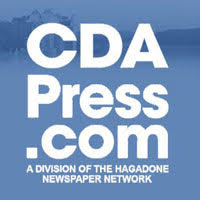Trust in information sources as a moderator of the impact of COVID-19 anxiety and exposure to information on conspiracy thinking and misinformation beliefs: a multilevel study

The emergence of infectious diseases has historically caused serious problems for both global stability and public health. In 2002, the world grappled with the severe acute respiratory syndrome (SARS) outbreak, which, by 2003, had spread to 29 countries, resulting in 774 deaths, and affecting over 8,000 individuals [1]. In a striking parallel, the novel coronavirus (COVID-19) surfaced in December 2019 in Wuhan, China, and has since evolved into a global concern of unprecedented proportions.
The World Health Organization observed over 659 million confirmed COVID-19 cases as of January 10, 2023, with more than 6.7 million fatalities and more than 13 million vaccination doses given globally [2]. The World Health Organization classified the pandemic as a global health disaster of substantial concern because of its enormous scope, which caused severe suffering and fatalities across the globe [3].
Beyond the direct impacts of the illness, the COVID-19 pandemic has still sparked widespread fear and hysteria, with far-reaching implications that are frequently unrelated to the virus’s actual medical effects [4, 5]. Addressing the psychological effects of COVID-19 has become a pressing concern in the twenty-first century[6].
Numerous research have examined the COVID-19 pandemic’s psychological effects and found a variety of negative effects on mental health and wellbeing. Sleep issues, increased alertness, feelings of helplessness, alterations in mood, health-related concerns, depression, and irritation are among these effects[7,8,9,10,11,12]. In addition, the epidemic has sparked an alarming rise in conspiracy views and false information, despite intense efforts by governments and groups to stop the virus’s spread [13].
Conspiracy thinking, a well-documented phenomenon during societal crises and health pandemics, has been shown to fuel reluctance to engage in health-related behaviors and foster misunderstandings about the underlying issues [14, 15]. Throughout the COVID-19 pandemic, subjects such as the virus’s origin, severity, and containment have become focal points for conspiracy theories [16] The study of conspiracy thinking has emerged as a burgeoning field, seeking to uncover the factors that influence individuals’ acceptance of such beliefs [17, 18].
Different studies highlighted that conspiracy beliefs led to anxiety and threat [7, 17, 19]. Douglas, Uscinski [20] found that people who believe in conspiracies tend to be more anxious. Additionally, those who experience high levels of anxiety are more susceptible to such beliefs. Misinformation beliefs during covid-19 brought about feelings of anxiety [21]. Within the perspective of continued influence theories, misinformation not only cause poor judgements and decision-making, but it also has a long-lasting effect on people’s reasoning after correction [22]. In their model of false beliefs drivers, Ecker, Lewandowsky [22] posited that misinformation beliefs might come from cognitive drivers (intuitive thinking, cognitive failure, and illusory truth), and socio-affective drivers (source cues, emotion, world view). Verma et al., (2022) found that anxiety level doubled or tripled among twitter users who shared COVID-19 misinformation compared to other users who refused to share misinformation. As such, conspiracy thinking decreases trust in traditional media and increase reliance on social media which transmit misinformation [23, 24]. In other studies, anxiety was not strongly associated with conspiracy theories and misinformation beliefs [24]. We hypothesize that COVID-19 anxiety and sources of information drive individuals to believe in conspiracy theories and misinformation beliefs.
Problem
The COVID-19 pandemic has significantly impacted Oman, with 399,154 confirmed cases and 4,628 deaths as of January 10, 2023. While the country has made progress in vaccination efforts, with 63.79% of the population having received at least one dose, misinformation remains a significant issue that has not been adequately addressed. In Western cultures, research has shown the importance of conspiratorial and misinformation beliefs in the proliferation of COVID-19 anxiety and “Coronaphobia,“ [25,26,27,28,29,30,31,32] leading to negative effects such as vaccine hesitancy [33]. However, little to no research has been conducted in the Arab Gulf region, specifically in Oman, on the relationship between misinformation beliefs, conspiracy theories, and COVID-19 anxiety.
To address this gap, this study investigates the relationship between misinformation beliefs, conspiracy theories, and COVID-19 anxiety among the Omani population. Research has shown that people believe conspiracy theories when important psychological needs are unmet, such as the desire to satisfy curiosity, avoid uncertainty, and reduce COVID-19 anxiety. By understanding the factors contributing to the spread of misinformation and conspiratorial beliefs in the Omani context, policymakers and health-care professionals can develop targeted interventions to combat this issue.“
Literature review
In simple terms, “any activity is conspiratorial if it is undertaken in secret by a group of agents who intend some end” [34., p. 24]. Conspiracy theories explain that some kind of conspiracy thinking interprets the incidence of an event. The concept of conspiracy should satisfy three main conditions to be classified as a conspiracy: (a) the conspirators condition (plotters), (b) the secrecy condition, and (c) the goal condition [34]. Considering these three conditions, we can assume that they are inherent in most conspiracy thoughts that accompanied the outbreak of COVID-19 pandemic.
Conspiracy theories about COVID-19
Conspiracy theories significantly increased following the outbreak of COVID-19. The main purpose of these theories is to explain important events and situations as the malicious acts of third parties [35]. For example, during the pandemic, many people believed that COVID-19 was manufactured in a Chinese laboratory, while others believed that governments exaggerated the severity of the virus as part of a plot to control citizens [28]. People who believe in conspiracy theories tend to engage in irrational behaviors, leading to severe or negative impacts on their health [20]. Additionally, conspiracy theories can harm trust in health institutions and hinder efforts to combat the virus [36].
Scholars have begun to explore the impact of conspiracy theories on individual and public health during the pandemic [25, 37, 38]. For example, Romer and Jamieson [39] examined the impact of conspiracy theories on protective measures in the United States. The results showed that these theories lead to resistance to precautionary actions and vaccination. People avoided wearing masks and getting vaccinated because they believed the virus did not exist and that the vaccine was a means of control. Previous studies have also confirmed the link between conspiracy theories and individuals’ hesitancy to make informed decisions [40, 41].
Uscinski, Enders [32] found that, while many people recognized the seriousness of COVID-19, a significant number of study participants agreed that the danger posed by the virus had been exaggerated and that the virus was purposely produced and spread by other parties. The study highlighted that individuals’ beliefs in conspiracy theories may be driven by denialism, conspiracy thinking, and biased or ideological motivations.
It is difficult to identify a single mechanism that controls the association between education and conspiracy thinking as different psychological mechanisms underlie this relationship e.g., [17]. Not surprisingly, low-educated individuals and those dissatisfied with government actions in response to the pandemic are particularly susceptible to conspiracy theories [42]. Conversely, past research has shown that high levels of education predict low belief in conspiracy theories due to education’s cognitive, emotional, and social outcomes e.g., [17, 43, 44].
It is widely acknowledged in the literature that false beliefs led to an underestimation of the threat and hindered individuals’ efforts to get vaccinated [45]. Different conspiracy theories spread during the pandemic, for example, the belief that 5G technology was the direct cause of the outbreak of COVID-19 [46] and that the virus was manufactured in a Chinese laboratory [35]. As a result, conspiracy theories describing COVID-19 as a hoax were positively associated with less preparedness in containment procedures [30] and predicted vaccine hesitancy [47].
Misinformation beliefs about COVID-19
The spread of the virus worldwide was accompanied by thousands of people, backed by pseudoscientific treatment ideas and conspiracies [31, 48]. Misinformation has increased on social media due to people believing in this type of information and conspiracy theories, which made social media outlets fertile to germinate a massive amount of misinformation [49, 50].
In the last phases of the pandemic, most false claims were about the vaccine, specifically its side-effect, which cause fear and panic [51, 52]. Some examples of these claims are:
-
Vaccines are not safe and cause health risks,
-
A way to reduce the population will alter human DNA and causes infertility or death.
In Oman, many refused to get the vaccine because of such rumors [53, 54]. Smith, Ng [55] argued that false information about a cure for the Coronavirus had caused widespread fear and distrust among the public. Vaccine hesitancy was added to the World Health Organization’s top ten global health issues for 2019, according to the WHO’s website. This highlights the concern over the growing trend of individuals refusing vaccines for themselves or their children. The inclusion of vaccine hesitancy on this list predates the COVID-19 pandemic [56]. The authors revealed that misinformation and unfavorable attitudes are very contagious and can lower vaccination rates. For example, during the 2009 swine flu outbreak, the spread of skepticism and unproven hypotheses about vaccine safety affected people’s willingness to be vaccinated. Several studies have found that exposure to anti-vaccination beliefs and misinformation on Twitter has increased vaccine reluctance and refusal and a drop in vaccination uptake [57,58,59]. Omani citizens and Omani government made positive efforts to deal with misinformation [21].
Health institutions and information systems were not well-prepared to respond to the outflow of infected cases. Although trust in health systems helped shape the public response to the COVID-19 pandemic [60], People’s belief in misleading thoughts decreased their confidence in medical procedures [36]. In his warning in 2020, the Director General of WHO declared the fighting against “infodemic” which spreads faster and more easily than the virus [30]. Misleading information about COVID-19 negatively affected governmental efforts in the struggle with the epidemic leading to unintended deaths [61], and vice versa, the awareness of preventive measures might weaken misinformation beliefs also studies found that there was a strong association between trust in science and belief in misinformation e.g., trusting science more are less likely to believe misinformation [62] Those authors later found that the same trust in science scale was associated with COVID-19 vaccination intention [63]. No doubt that misleading information has a negative impact on taking preventative measures [28]. Conversely, Alper, Bayrak [64] found no association between misinformation beliefs and preventative measures. According to Jovančević and Milićević [65], optimistic people have more preventative measures and less fear than pessimistic people. Kim and Kim [66] claimed that people who perceive danger accept fake news. In this context, McCaffery, Dodd [67] concluded that health knowledge and ways of thinking might have reduced efforts against the pandemic spread in Australia.
COVID-19 anxiety
The amount of misinformation spread through social networks affected the response to the pandemic, as it had health, psychological and social effects on individuals [25]. The inability to distinguish between facts and misinformation might lead to psychological, health and social distress and may even extend to the economic and political aspects [22, 68]. Many researchers claimed that misinformation increased the level of COVID-19 anxiety among individuals leading to unpredicted actions to avoid infection with covid-19. In addition, it was found that exposure to misinformation increased the level of depression [69]. In order to alleviate these feelings, individuals looked for more information that might comfort them [70].
The COVID-19 outbreak has proved that responding to misinformation is challenging for many reasons. Social, emotional and cultural factors affect the absorption of misinformation, hindering efforts to stop the negative impact of this type of information [71]. In terms of health, Joseph et al. (2022) indicated that spreading false information about the virus through social networks leads to negative results, including reluctance to follow recommendations related to the virus to preserve public health and increasing levels of COVID-19 anxiety and fear. The accumulation of this unfounded information leads to abstaining from vaccinations, which seriously affects public health [72]. Misinformation regarding prevention and treatment measures is particularly harmful because it may directly cause deaths [73]. Misinformation also causes uninformed and rushed health decisions [74].
Psychologically, increased exposure to social media information can negatively affect the community mental health (Hammad and Alqarni [69]. Similarly, in the Arab region, it was believed that the outbreak of the virus has led to continued doubt and uncertainty about the nature of the virus [75]. It has also been proven that the spread of misinformation raises concern and suspicion among the public from the advice given by public health officials [76]. Shehata and Eldakar [75] found that misinformation affects individuals’ health decisions and mental health, leading to increased fear and anxiety. On the other hand, people’s disagreement about the reality of the virus and their exchange of information led to personal and family conflicts [77]. It can also adversely affect health-care infrastructure and society [76].
Sources of information about COVID-19
People should obtain adequate and accurate information about COVID-19 and vaccine from a trusted source. Public trust building should be a priority through collaboration between citizens and civic institutions in supporting health-care providers [78]. Although “Exposure to traditional media regularly undertake efforts to debunk conspiracy theories and misinformation”[24], spread of misinformation about COVID-19 progressed at unprecedented speed worldwide via social media networking sites [79]. Likewise, social media are considered as the main reason behind conspiracy theories as well Georgiou, Delfabbro [42]. Narratives of conspiracy theories and misinformation beliefs were strongly associated with exposure to digital media causing higher feelings of depression [24]. Since COVID-19 preventive precautions were negatively associated with conspiratorial and misinformation beliefs, researchers ought to investigate the psychological, political, and health factors underlying those fake thoughts [80].
A significant number of studies have explored the sources of information adopted by individuals to obtain information about COVID-19 [81,82,83]. These studies have found a variance in the sources utilized by individuals to seek information related to the virus. Interestingly, it was found that social media outlets represented a significant source of information as many used them for health information. However, using social media outlets produced many problems, as much of the information shared through them is false or misleading [84,85,86].
Li, Pastukhova [87] and Andika, Kao [88] explored the use of YouTube as a source of information during the COVID-19 pandemic. Both studies revealed that many videos watched by a huge number of viewers contained misleading information that could negatively affect individuals exposed to this information. The studies recommended that health authorities need to collaborate with Youtubers in producing videos that contain reliable health information as the reach of these videos is higher than traditional communication channels.
A study by Mansour, Shehata [89] explored the sources of information utilized by Egyptian physicians working in isolation hospitals. Results indicated that participants prefer to use traditional information sources when dealing with COVID-19 cases, such as research papers and trusted medical databases, with a little emphasis on non-traditional sources, such as social media. Similarly, Tran, Dang [90] focused on Vietnam’s health and community workers. The results outlined that the Internet, online newspapers, and social networks were the most popular channels used by health workers in Vietnam, revealing a lack of proper information literacy practices and a need for tailored programs for information literacy skills. In Taiwan, Wang, Lu [82] found that while many participants, including health-care workers, are using the Internet and social media to obtain health information related to COVID-19, the use of such channels was associated with the participants’ confidence in their ability to obtain reliable information.
Studies also found that individuals utilize other sources of information for health information, including COVID-19 information. A study by Shehata [91] revealed that in addition to social media as a source of health information, personal contacts (family and friends) were among the top sources of information. Other sources, such as authorities’ webpages, newspapers, and magazines, were confirmed to be used by the participants. Notably, many studies confirmed that social outlets such as WhatsApp, Telegram, Instagram, and Facebook were among the highly used sources of health information on the Internet rather than being a source of rumors and misinformation [92,93,94].
Trust in sources of information about COVID-19
Social networks have facilitated the dissemination of information worldwide; however, with the infodemic that accompanied the COVID-19 pandemic, individuals could not trust the information they find through social outlets [95]. During the pandemic, COVID-19 misinformation evolved continuously, contributing to the “digital destruction of the mental model” [96]. Therefore, many studies aimed to explore the factors that affect individuals’ trust in the information they read on the Internet. On an individual level, Shehata and Alnadabi [97] investigated the factors that lead undergraduates to trust and share information online using the theory of reasoned action. The results revealed that age, gender, self-efficacy, personal beliefs, and subjective norms play a key role in determining trust in information. Moreover, using digital platforms was associated with lack of basic ethical competencies [98].
Pan, Liu [99] confirmed the previous results, as the study showed that pre-existing beliefs lead to acceptance of misinformation and trust in online information sources. On the other hand, the study claimed that education level and age are not associated with the acceptance of misinformation or trust in online information. Similarly, Shehata [91] explored the health information behavior of undergraduates and revealed that personal beliefs affect individuals’ trust of information, confirming Pan, Liu [99] results. Individuals tend to trust information that is consistent with their beliefs to avoid dissonance in behavior.
Notably, Latkin, Dayton [100] reported a decline in trust in formal information sources in the USA. The study revealed that the state health department and the White House were among the sample’s top untrusted sources of information due to their doubt that politics are playing a part in the spread of COVID-19. Figueiras, Ghorayeb [101] rated health information sources in terms of trust in these sources in UAE. The study argued that trust is influenced by sociodemographic (culture, age, gender) factors. The most trusted sources were physicians, health-care workers, and formal government channels. The results revealed that the use of sources and levels of trust varied based on age, gender, and education. The study also noted that adopting protective behavior affected the level of trust among the sample.
De Coninck, Frissen [24] investigated the relationship between exposure to information sources and conspiracy, and misinformation beliefs; and tested the moderating role of trust in information sources as well as the mediating role of depression and anxiety in eight European, Asian, and American countries during the pandemic. Results indicated that greater exposure to politicians and digital media and personal contacts was associated with higher rate of belief in conspiracy and misinformation, while exposure to traditional media was associated with lower conspiracy and misinformation beliefs. The difference between our study and that of De Coninck et al. is that their study was cross-national comparative research, yet ours is a within-nation comparative study. They used cross-cultural and overseas samples to collect data from USA, UK, New Zealand, Canada, Philippines, Hong Kong, Switzerland, but we recruited only participants from Omani citizens. It is worth noting that we adopted the same instruments.
Overall, studies have shown that the use of information resources varies. The type of information resources used in one region is not necessarily the same in the other as many variables shape the individuals’ behavior and acceptance of information resources. However, it can be said that personal beliefs, self-efficacy, culture, age, gender, and education were the most visible factors in all studies [95, 102, 103].
Gender differences in conspiracy thinking and misinformation beliefs
Gender has been found to impact the belief in conspiracy theories. Despite the limited research on gender differences in conspiracy thinking, it has been generally observed that men tend to be more inclined to endorse COVID-19 conspiracy theories than females [16] and are more affected by false beliefs [79]. Conversely, Pan, Liu [99] research indicates that females tend to be more accepting of online misinformation than males.
Age, employment, and level of education
Different studies indicated that people with high level of education are less inclined than those with low level of education to believe in conspiracy theories [17, 43, 44]. To interpret this, Gerosa, Gui [104] argued that people with higher levels of education display higher levels of knowledge. On the other hand, level of education did not have a significant role in believing misinformation. With regard to age, studies in this area are still nascent but some studies, e.g., Douglas, Sutton [105] concluded that young people in middle adolescence are keen on accepting conspiracy theories. Jolley, Douglas [106] believed that conspiracy theories beliefs change across lifespan, and it is not easy to examine conspiracy theories across the lifespan. Concerning employment, countries with high levels of unemployment offer fertile ground for the conspiracy theories [107].
Study aims
In this study, our primary aims were to elucidate the intricate interplay between conspiracy theories, misinformation beliefs, and COVID-19 anxiety. Specifically, we sought to examine the moderating effect of trust and the mediating effect of COVID-19 anxiety in shaping the relationship between exposure to information sources and individuals’ tendencies towards conspiracy theories and misinformation beliefs. Additionally, we endeavored to explore how these relationships may vary across demographic factors, including age group, educational level, gender, and place of residence (governorate).
Study hypotheses
In line with this literature, we formulated the following hypotheses
H1. Exposure to digital media will be associated with greater conspiracy and misinformation beliefs.
H2. Exposure to traditional media is expected to be associated with lower conspiracy and misinformation beliefs.
H3. The impact of COVID-19 anxiety and exposure to information sources on conspiracy theories and misinformation beliefs is moderated by trust in these sources.
H4. COVID-19 anxiety is positively associated with conspiracy and misinformation beliefs.
H5. The rate of conspiracy and misinformation beliefs is similar across all governorates.
H6. Conspiracy theories, misinformation beliefs, and COVID-19 would differ significantly according to gender, education level, employment, place of residence, and age.
This article has been archived for your research. The original version from BMC Psychology can be found here.


